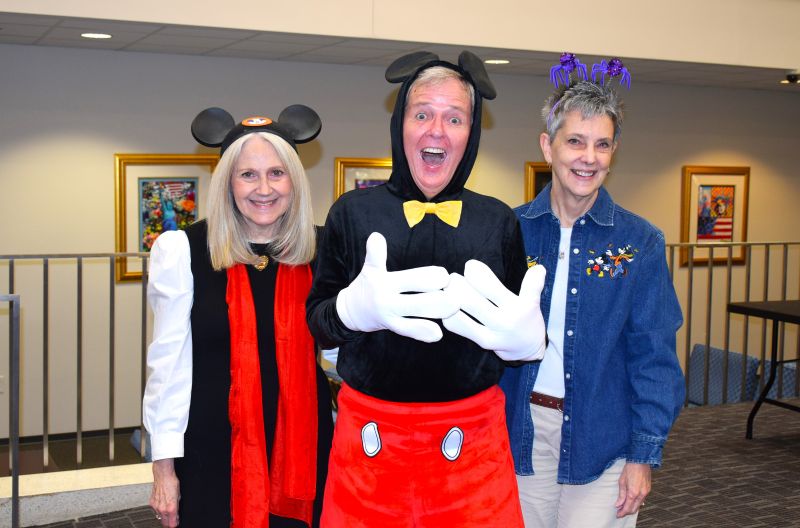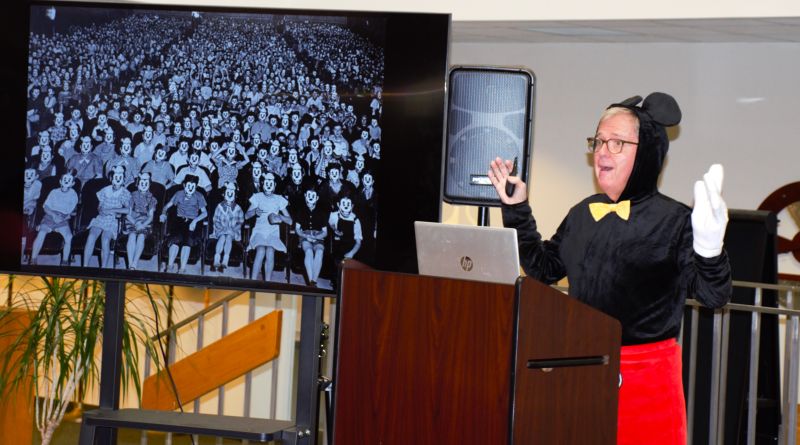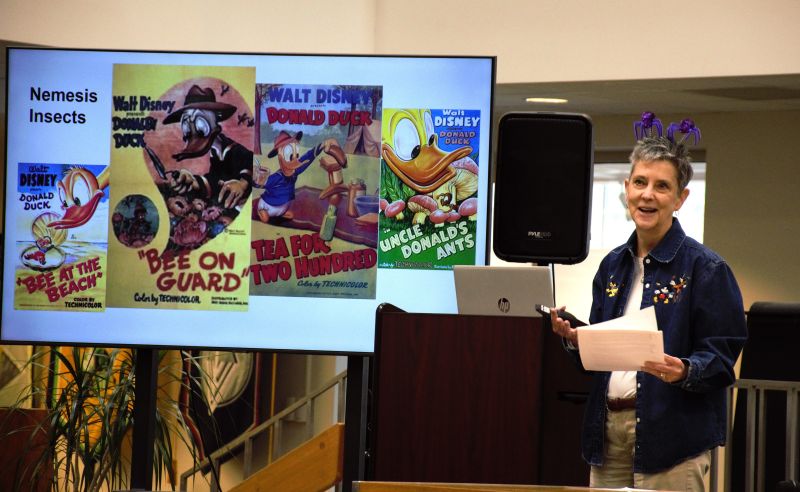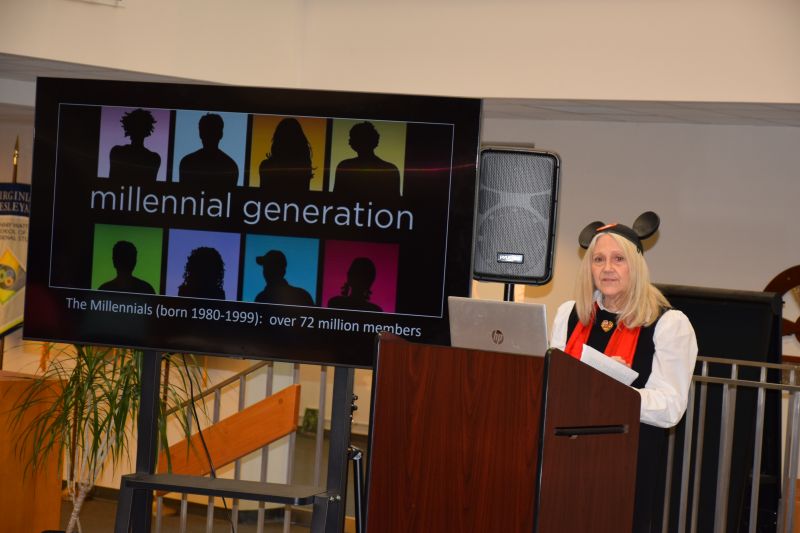Share this Story
Disney’s Menagerie: Animals in Disney Culture
Professors Merlock Jackson, Lindvall, and Stolley offer their insights during Page to Podium lecture
University News | November 5, 2025

This enduring fascination was the focus of “Disney’s Menagerie: Animals in Disney Culture,” a Page to Podium lecture hosted by Virginia Wesleyan University’s Hofheimer Library on November 5. Faculty experts Dr. Terry Lindvall, professor of religious studies; Dr. Kathy Stolley, professor of sociology; and Dr. Kathy Merlock Jackson, professor of media and communication, each offered unique perspectives on the role of animals—real and imagined—within Disney’s vast cultural empire.
Rodents with Character: Mickey and the Rat
 Dr. Lindvall’s presentation, “The Mouse and the Rat: Disney’s Affection for Rodents,” traced the complex evolution of Disney’s most iconic species. He explored how Mickey Mouse became a global symbol—appearing everywhere from 1930s children’s masks to Holocaust literature, where he was both a victim and a propaganda tool.
Dr. Lindvall’s presentation, “The Mouse and the Rat: Disney’s Affection for Rodents,” traced the complex evolution of Disney’s most iconic species. He explored how Mickey Mouse became a global symbol—appearing everywhere from 1930s children’s masks to Holocaust literature, where he was both a victim and a propaganda tool.
“In the 1930s and ’40s, Mickey’s image shifted dramatically—from innocent mouse to something more complex,” Lindvall explained. “The film Ratatouille captures that transformation perfectly: a rat who dreams of becoming a chef in Paris, showing how we can see ourselves in both the noble and the mischievous sides of these creatures.”
Lindvall’s takeaway was both humorous and profound: “Are we mice or rats? Probably both.”
 The Buzz About Insects
The Buzz About Insects
In her talk, “Insects in the Disney Menagerie,” Dr. Stolley delved into the lesser-known but surprisingly influential world of Disney’s bugs. From early Silly Symphonies cartoons that animated insects in rhythm with orchestral music, to darker portrayals of “nemesis insects” as monstrous threats in mid-20th-century cinema, Disney’s depictions reveal both fascination and fear.
“Disney used insects to reflect the times,” Stolley noted. “They could be charming and whimsical—or serve as metaphors for anxiety about science, war, and technology. Even the smallest creatures in Disney’s world carry cultural weight.”

Rounding out the discussion, Dr. Merlock-Jackson examined modern fandom in her talk, “Disney Adults and Their Dogs.” She focused on the Millennial generation—72 million people born between 1980 and 1999—who grew up immersed in Disney media and now express their affection for both Disney and their pets in creative ways.
“Forty-two percent of Millennials regard their pets as children,” she explained. “Many are delaying or foregoing parenthood but channeling their nurturing instincts through their dogs—and Disney helps shape that identity.”
From naming pets after beloved characters like “Belle,” “Elsa,” or “Buddy” (Air Bud), to purchasing Disney-branded raincoats, sweaters, and toys from outlets like Chewy, Merlock-Jackson illustrated how the lines between fandom, commerce, and companionship have blurred. “These Disney-inspired products and rituals transform pets into participants in human culture,” she said.
As Mickey Mouse nears his 100th birthday, Disney’s Menagerie offered an engaging reflection on the company’s century-long conversation between humans and animals—a dialogue that continues to shape art, commerce, and cultural identity.

